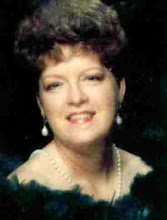
Top 10 Tips for Incorporating Valentine's Day Themes in Your Classroom
When many people think of Valentine's Day, they picture chocolate hearts, roses, and gushy cards. However, there are other ways that you can incorporate this romantic holiday into your classroom. Here are some fun and creative ways to add learning to the love.
1. Get some hearty exercise.
Your heart is one of the most important muscles in your body, supplying all the other parts with the oxygen and nutrients that they need to thrive. You can incorporate this into your Valentine's Day lesson plans with cardiovascular activities, learning to take heart rates, or discussing the effects of fatty foods or drugs on the heart.
2. Make a heart.
Valentines have been a long-standing tradition of Valentine's Day, so here is a good chance to bring out the creative skills. Beyond the classic cutting, pasting, and applying glitter, you can have students work on their writing skills, penmanship, or spelling. Consider having them make cards for members of the staff, such as janitors or the food service workers.
3. Start a conversation.
Conversation hearts have been around since the civil war, and each year, new sayings are added. Challenge your students to create their own custom sayings that would fit on the average conversation heart (five or less characters in one line, or two lines of less than four characters). Or, have students pull out half a dozen candy hearts and work them into a story line.
4. Graph it out.
Younger students will enjoy learning to count and graph with the assistance of conversation hearts. Give each student a single serving box and have them graph the contents (how many pink ones, how many yellow ones, etc.) You can even compare as a class to see which color was the most popular.
5. Heart healthy menus.
Since Valentine's Day is all about heart, how about the health of your heart? Encourage students to come up with ways that they can eat better to make their heart healthier (such as skipping fast food for the month of February), come up with balanced meal plans, or even cook some heart healthy recipes.
6. How the heart works.
Your study of Valentine's Day and the heart can also look into heart health and diseases. Talk about the different chambers of the heart, listen to each other's heartbeats with stethoscopes, or discuss heart diagnostic equipment like EKGs.
7. Share heart quotes.
Love has been an often quoted subject throughout literature. Have students match the quote to the original source, or look up their own quotes that convey their feelings.
8. It is all in the blood.
A study of the heart can also take a look at the entire circulatory system. Talk about the heart, lungs, and different blood vessels and their jobs. Older students can discuss the different blood types and how different cells in the blood have different jobs.
9. The heart has a rhythm.
Students are usually familiar with the rhythmic sounds that the heart makes as it is beating. You can use this as an introduction to rhythm in music classes, and have students clap out other rhythms in song.
10. The heart is in the mail.
For some students, the holidays may be the only chance they get each year to see relatives that live out of state. This can be a great way to introduce map reading skills, discuss different climates, or learn to read airline schedules. Older classes can use the internet to plan imaginary trips to far off countries and discuss flight plans and what to pack for the weather.
Since not every person that you send a Valentine to lives in the same home, this can be a good opportunity to discuss how the mail system works. You can also look into the history of mail, like the Pony Express, or discuss how stamps are made. Since the post office often puts out holiday stamps, you can have students design their own stamps for Valentine's Day.
Sharing the love and the science behind Valentine's Day is easy to do with these activities.
Other Resources: http://geocities.com/mrsjacksonsclass/valentinesday.htm



